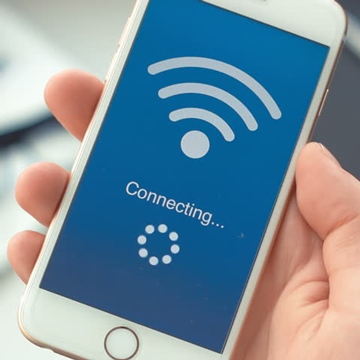What to avoid when providing WiFi to your customers
As a company dedicated to WiFi we have seen a lot of different solutions through the years in this increasingly competitive market and also have tested an array of features at a wide range of businesses. We have discovered that very often what a business wants is not what it actually needs. In other words, sometimes businesses that provide WiFi to their customers set it up in a way that does not actually provide the best results for them. It is not always trivial what works best for each company, that said, from our experience there are some general guidelines that a company can follow in order to increase their chance of success.
Below we mention briefly some of the most common WiFi configurations we recommend you to AVOID:
• Showing too many advertisements in a single visit: Many companies overdo it with advertisements within the WiFi. You should find the right balance between showing your marketing content and not making your customers seek and tired of using your WiFi, otherwise they’ll switch to 4G. For example, if your customers stay at your store for 2 hours on average, set your ads to show 4 hours apart.
• Sharing discount coupons only rarely: Sharing discount coupons regularly in WiFi builds loyalty and creates returning customers. For example, sharing coupons on someone’s birthday, on someone’s 1st visit or on someone’s 20th visit are tactics that may lead to increased sales.
• Giving too many login options: This seems to discourage people from logging in. Stick to a maximum of 5 options. Avoid telephone option since it is rarely used, avoid one email-field option since people tend to give fake emails (prefer a form for account creation) and have in mind that the 2 most used social logins are Facebook and Google.
• “Forgetting” previous actions of customers: With some exceptions of course, if you setup a WiFi without auto-login for already “known” users it will end up frustrating your customers. Same goes with accepting terms and conditions. The system should remember each user’s choice and not repeatedly asking for the same things over and over again. Another example is requesting feedback more than once in the same day. It will definitely get you a negative rating.
• Requiring customers to “Check-in” or “Like”: Mandatory Facebook actions are regarded as intrusion to one’s privacy, so make these optional (same applies for actions on other social platforms).
• Having more than 3 steps before a customer connects to the internet: The longer the user-flow, the higher the chance a user will quit the process with frustration before completion. Keep it simple.
• Allowing access to Facebook, Google, YouTube etc. before login: If some parts of the internet are accessible before the login process is completed and some others aren’t, it creates confusion to the users whether they are connected or not.
• Using splash page editors to design the layout of promotional material: If you are not a designer you’d better use the already provided layouts. We’ve witnessed creations comprising of unresponsive designs unsuitable for mobile devices, huge amounts of text which nobody reads and pixelated images. All that add up in creating a bad image for a company.
• Keep sending marketing messages to customers disregarding their preferences: Respect your customers and their preferences. Give them a way to opt-out from getting these kind of notifications and abide by it.
• Setting up more than one SSID for customers: SSID is short for “Service Set Identifier” and is the name of a WiFi network. Having more than one for customers creates confusion and prevents roaming (continuous access to the internet while users are moving from place to place). Moreover it should be clear which one of all the available SSIDs is for your guests and it should not contain emoticons since they create incompatibilities with some devices.
• Providing unregulated bandwidth to customers: WiFi is a “scarce commodity” thus it should not be left without limitations because it may be monopolized by some users and become unusable by others.
• Requiring customers to pay for internet access: Providing free WiFi plays a major role in keeping your customers longer at your premises and satisfied. Also it lures people into your stores.
If you’d like to discuss…
-How WiFi can become your new marketing tool
-Why your company might needs a WiFi marketing solution
-New WiFi features which can help your company’s sales increase
-How to choose the correct WiFi marketing solution for your company
Come and speak to us at stand G230 or contact us and see if we can help you.
Company: JoinMyWifi
Website: www.joinmywifi.com
Email: info@joinmywifi.com
Tel: 00357-22353546






